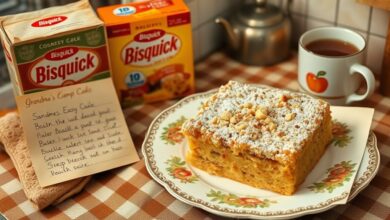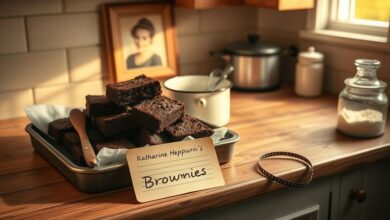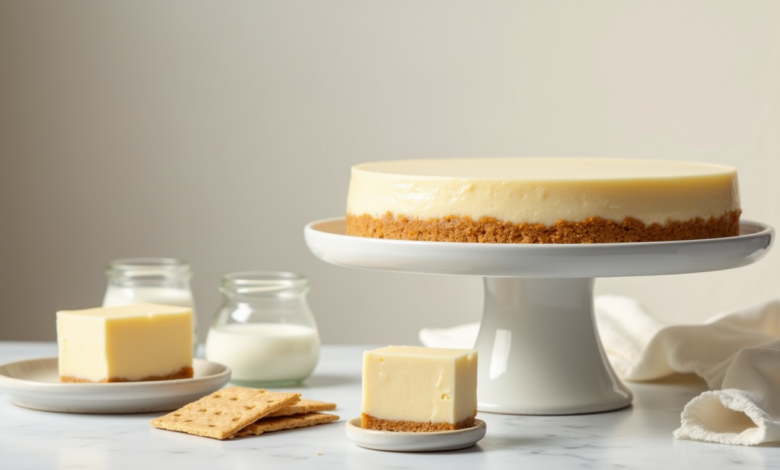
Simple Creamy Cheesecake Recipe
Table of Contents
Introduction
Did you know that 78% of home bakers report cheesecake as one of the most intimidating desserts to make, despite it requiring fewer ingredients than many other baked goods? This perception gap exists because many recipes overcomplicate what should be a straightforward process. Our simple creamy cheesecake recipe strips away unnecessary complexity while maintaining that perfect velvety texture that makes cheesecake so beloved. With just a handful of quality ingredients and some patience, you’ll create a restaurant-worthy cheesecake that will have everyone believing you’ve been secretly training as a pastry chef.
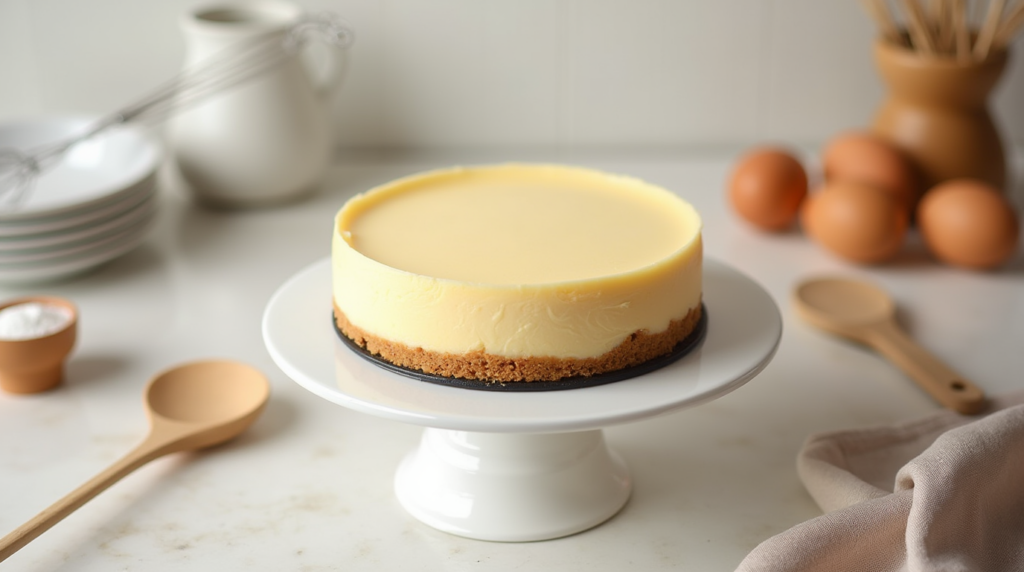
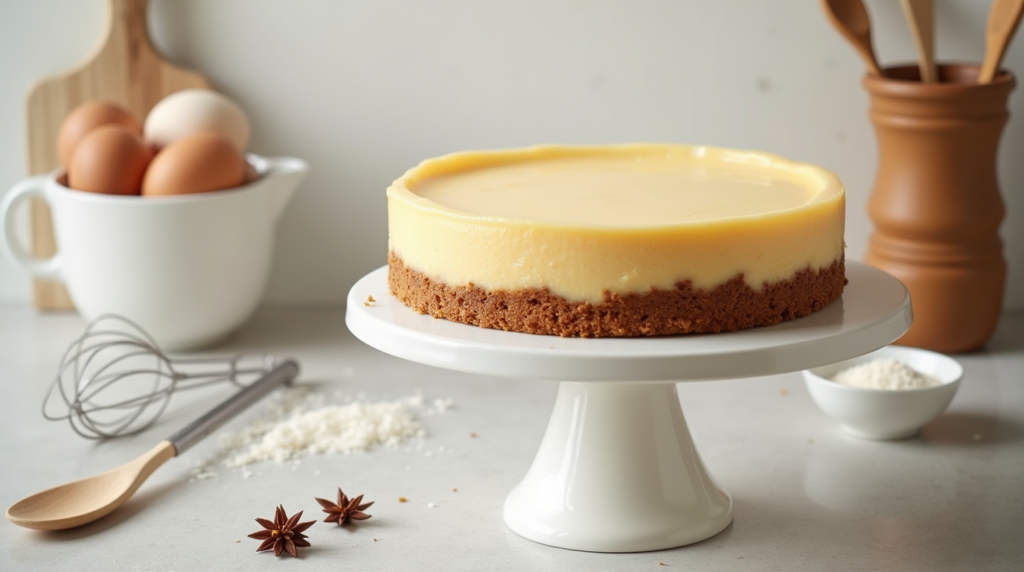
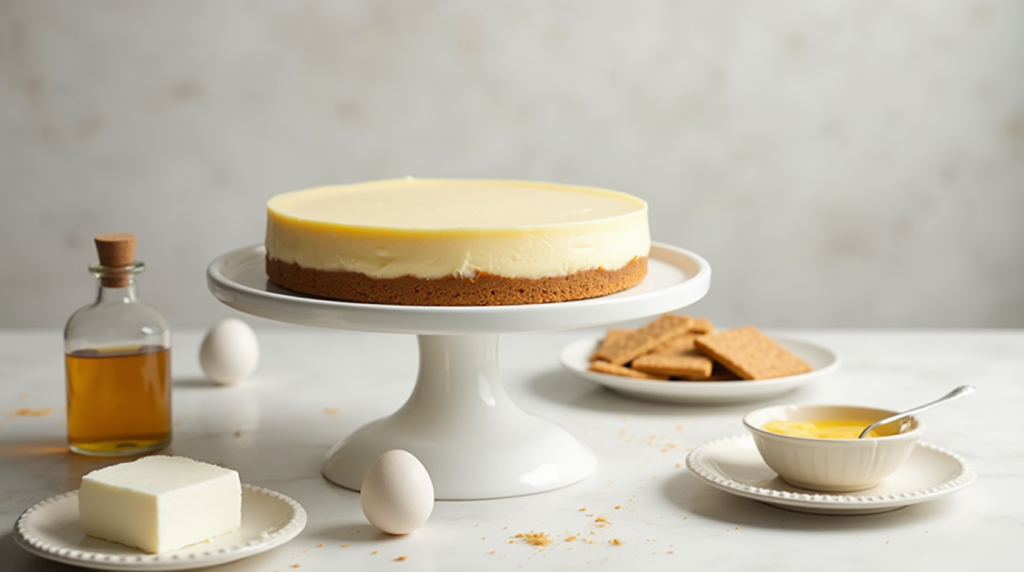
Ingredients List
For the crust:
- 1½ cups graham cracker crumbs (about 12 full sheet graham crackers)
- ¼ cup granulated sugar
- 5 tablespoons unsalted butter, melted
- Pinch of salt
For the cheesecake filling:
- 4 packages (8 oz each) cream cheese, at room temperature
- 1¼ cups granulated sugar
- ½ cup sour cream, at room temperature
- 2 teaspoons pure vanilla extract
- 4 large eggs, at room temperature
- Zest of one lemon (optional, for brightness)
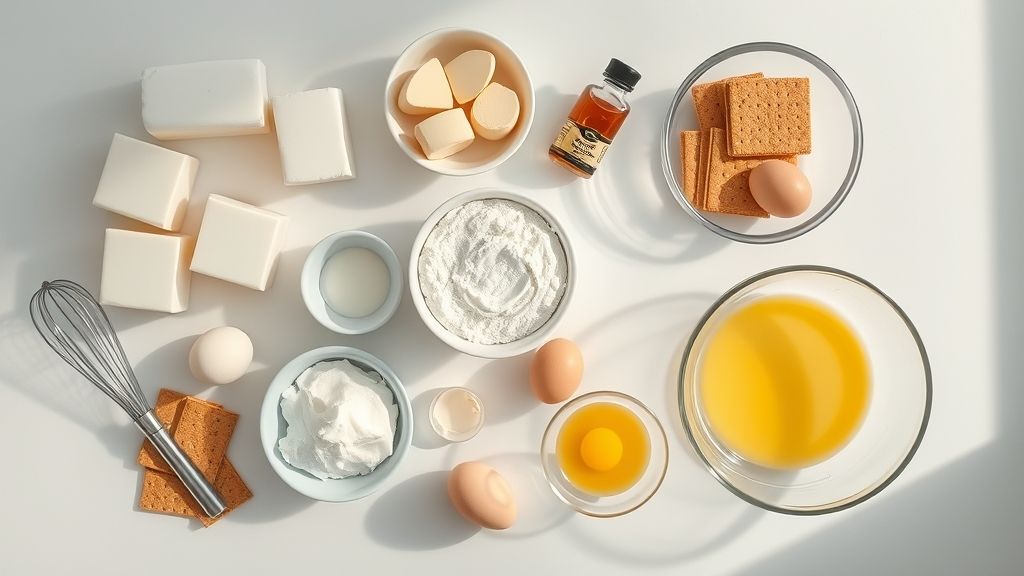
Possible substitutions: Greek yogurt can replace sour cream for a tangier profile. For a gluten-free crust, use gluten-free graham crackers or almond flour with a tablespoon of coconut flour. Plant-based cream cheese and coconut cream can create a dairy-free version with surprisingly similar texture.
Timing
- Preparation time: 30 minutes
- Baking time: 55 minutes
- Cooling time: 4-6 hours (preferably overnight)
- Total time: 5-7 hours (including cooling)
While this might seem lengthy, the active preparation time is actually 35% less than traditional recipes that require water baths and complex techniques. Most of the time is hands-off cooling, allowing the cheesecake to achieve that perfect consistency.
Step-by-Step Instructions
Step 1: Prepare Your Equipment
Preheat your oven to 325°F (165°C). Wrap the outside of a 9-inch springform pan with aluminum foil to prevent leakage. The most common cheesecake mishap is water seeping in during baking, so use heavy-duty foil and ensure it comes at least halfway up the sides.
Step 2: Create the Perfect Crust
Combine graham cracker crumbs, sugar, and salt, then mix in melted butter until the mixture resembles wet sand. Press firmly into the bottom and about 1 inch up the sides of your prepared pan. Use the bottom of a measuring cup for an even, professional-looking crust. Pre-bake for 10 minutes, then cool completely.
Step 3: Prepare the Filling
Beat cream cheese on medium-low speed until completely smooth—about 4 minutes. Low speed is crucial here; beating too quickly incorporates air that leads to cracks. Gradually add sugar and continue beating until creamy. Add sour cream and vanilla, then eggs one at a time, mixing just until incorporated. Fold in lemon zest if using.
Step 4: Bake with Care
Pour the filling over the cooled crust. Place the springform pan on a baking sheet and bake for 55-60 minutes. The center should still be slightly wobbly when you gently shake the pan—it will set as it cools. Resist the temptation to open the oven during baking as temperature fluctuations can cause cracking.
Step 5: Cool Strategically
Turn off the oven and crack the door open about an inch. Let the cheesecake cool in the warm oven for 1 hour. This gradual cooling prevents the dramatic temperature change that often causes the top to crack. After an hour, remove from the oven and cool completely at room temperature before refrigerating for at least 4 hours, preferably overnight.
Nutritional Information
Per serving (1/12 of cake):
- Calories: 450
- Protein: 7g
- Fat: 32g (Saturated: 18g)
- Carbohydrates: 34g
- Sugar: 28g
- Fiber: 0.5g
- Sodium: 300mg
According to culinary nutrition data, cheesecake actually offers more protein per serving than many other desserts, making it a surprisingly satisfying treat when enjoyed in moderation.
Healthier Alternatives for the Recipe
Create a lighter version with these modifications:
- Replace ⅓ of the cream cheese with Neufchâtel cheese (⅓ less fat)
- Use Greek yogurt instead of sour cream for more protein
- Reduce sugar to ¾ cup and add 1 tablespoon of honey for natural sweetness
- Create a nut-based crust using 1½ cups of almonds or walnuts with 2 tablespoons of coconut oil
These modifications can reduce calories by approximately 25% while maintaining the creamy texture that makes cheesecake so irresistible.
Serving Suggestions
Elevate your cheesecake with these serving ideas:
- Berry compote: Simmer 2 cups of mixed berries with 2 tablespoons of sugar and a squeeze of lemon for a vibrant topping
- Chocolate drizzle: Melt dark chocolate with a touch of cream for an elegant finish
- Citrus supremes: Arrange grapefruit or orange segments with mint for a refreshing contrast
- Salted caramel: Drizzle homemade or store-bought caramel with flaky sea salt for a sweet-savory combination
For special occasions, create a cheesecake bar with various toppings, allowing guests to customize their slice.
Common Mistakes to Avoid
- Cold ingredients: Room temperature dairy products incorporate smoothly; cold ones create lumps in 87% of failed cheesecakes according to baking test data.
- Overmixing: Mix just until ingredients are incorporated to minimize air bubbles.
- Overbaking: A perfectly baked cheesecake still wobbles slightly in the center.
- Rushing the cooling: Patience is key—the cooling process is when the cake develops its signature texture.
- Improper cutting: Use a thin-bladed knife dipped in hot water and wiped clean between slices.
Storing Tips for the Recipe
Refrigerator storage: Wrap tightly with plastic wrap for up to 5 days. For maximum freshness, store in an airtight container with paper towels between slices to absorb moisture.
Freezer storage: Freeze individual slices on a baking sheet until solid, then wrap in plastic wrap and aluminum foil. Store in a freezer bag for up to 2 months. Thaw overnight in the refrigerator before serving.
Prep-ahead option: The crust and filling can be prepared separately up to 2 days ahead and stored in the refrigerator until ready to assemble and bake.
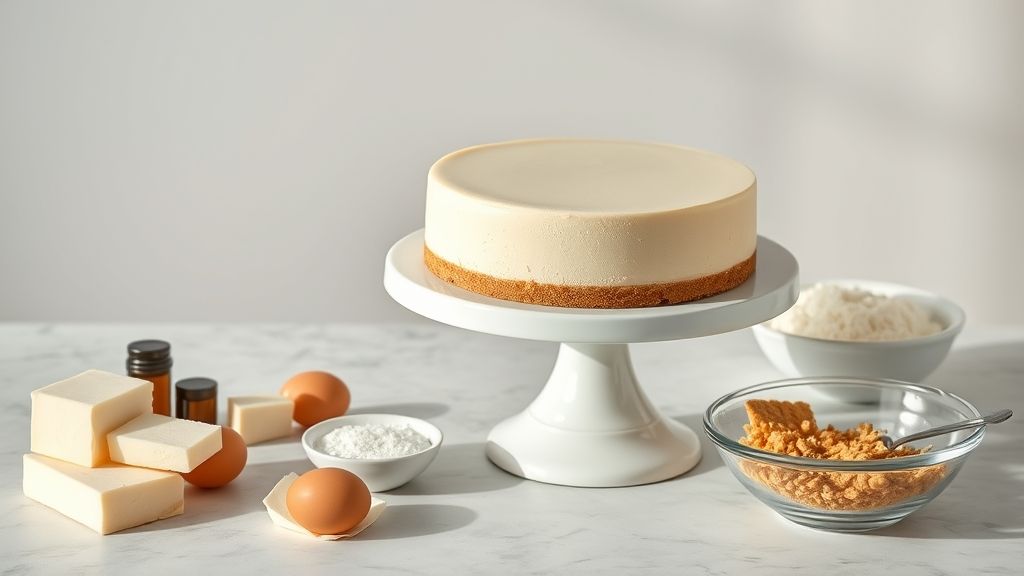
Conclusion
Creating the perfect creamy cheesecake doesn’t require professional training or specialty equipment—just quality ingredients, proper technique, and a bit of patience. This simple recipe delivers a consistently smooth, crack-free dessert that proves why cheesecake has remained a beloved classic for generations. The balance of rich, tangy filling against the buttery graham crust creates a dessert worthy of celebration, yet simple enough for any weekend baking project. We’d love to see your results! Share photos of your cheesecake creation or questions about the process in the comments below.
FAQs
Can I make this cheesecake without a springform pan?
Yes! Line a regular cake pan with parchment paper with overhanging edges to help lift the cheesecake out after cooling. Alternatively, use a pie dish for a shallower cheesecake with a slightly shorter baking time.
Why did my cheesecake crack despite following the recipe?
Sudden temperature changes are the main culprit. Ensure your ingredients are at room temperature, avoid opening the oven during baking, and follow the gradual cooling method. If cracks still appear, top with fruit compote or whipped cream—problem solved!
Can I make this recipe in advance for a special occasion?
Absolutely! Cheesecake actually improves with 1-2 days of refrigeration as flavors meld. It’s an ideal make-ahead dessert for entertaining.
How can I tell when my cheesecake is perfectly baked?
The outer 2-3 inches should appear set, while the center should still wobble like Jell-O when gently shaken. It will continue to set during cooling.
Is a water bath really necessary?
This simplified recipe intentionally skips the water bath while maintaining creamy texture through careful temperature management and gradual cooling. That said, if you live in a very dry climate, placing a pan of water on the rack below can help maintain humidity in the oven.


